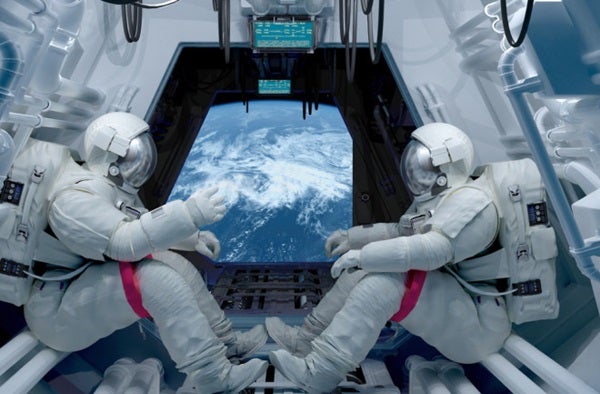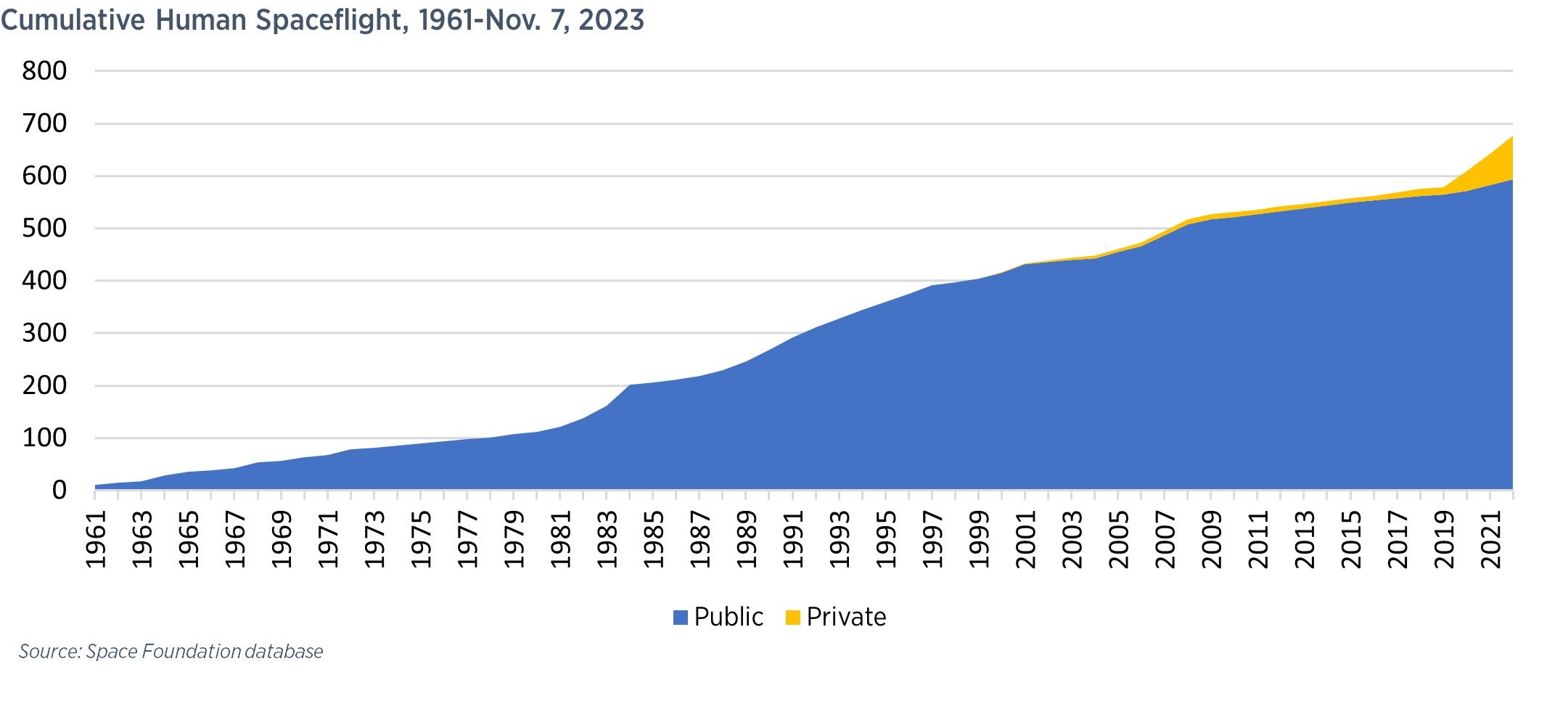
From the early days of the space race, sending humans to space has always been a priority.
The International Space Station (ISS) has maintained a continuous human presence in orbit for more than 20 years, and microgravity research on space stations has provided valuable insight for future long-term human missions in space. Space Foundation recently evaluated human spaceflight data and found as of Nov. 7, 2023, 676 people have journeyed to space by the U.S. definition of an altitude of 50 miles (80 kilometers). Of these astronauts, 643 have reached the Kármán line, internationally recognized at 100 km (62 miles).

The majority of astronauts sent to space, 86 percent, complete the journey with at least one orbit around the Earth. An additional 4 percent went beyond Earth orbit. NASA’s Apollo program sent 24 men to the Moon in the 1960s and 70s — 12 reached lunar orbit while another 12 landed on the surface.
The first operational flights of the Space Shuttle Program in the 1980s brought a wave of new humans to space. This activity peaked in 1985 with 38 first-time shuttle astronauts launching to orbit. In more recent years, commercial spaceflight operators have led another wave of new activity, this time targeting private astronauts and tourists primarily taking suborbital trips to space.
Public astronauts typically complete multiple missions in space over their careers — 65 percent have two or more flights compared to only 10 percent of private space travelers. Retired NASA astronaut and current Virgin Galactic pilot Frederick “C. J.” Sturckow remains the only person to have visited space nine times.
Humans from 43 nations have journeyed to space. The U.S. accounts for almost 61 percent of astronauts and 66 percent of total space missions flown, while Russia takes second place with 134 cosmonauts (20 percent).
The most significant human spaceflight trend in recent years has been a shift to focus on diversification. Compared to the lack of diversity in the Apollo program, the four selected astronauts for the Artemis II mission include the first woman (Christina Koch), the first person of color (Victor Glover), and the first non-American (the Canadian Space Agency’s Jeremy Hansen) to travel beyond Earth orbit.
The commercial spaceflight sector is expanding access to space for tourists. In the past three years, 69 private astronauts reached space for the first time — 46 above the Kármán line and 23 above the U.S. definition of space.
Zoe Hobbs is an economist and senior data analyst at Space Foundation.









